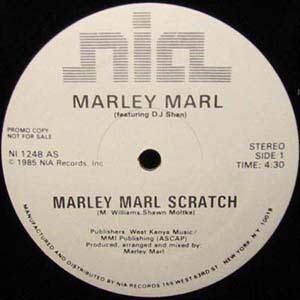David Bowie’s “China Girl” 12 inch

(Source: Illustrated DB)
China Girl (EMI 12EA 157)
UK (1983)
AÂ “China Girl” (Long Version)
BÂ “Shake It” (Remix)
The Long Version of ‘China Girl’ in fact is the album version.
 | :: ::
| :: ::
(Source: Illustrated DB)
China Girl (EMI 12EA 157)
UK (1983)
AÂ “China Girl” (Long Version)
BÂ “Shake It” (Remix)
The Long Version of ‘China Girl’ in fact is the album version.
(Source: First Monday)
November, 2006
Abstract Digital art has expanded, challenged, and even redefined notions of public art and supported the concept of a networked commons. The nature of agency within online, networked “systems†and “communities†is crucial to these developments. Electronic networks enable exchange and collectivist strategies that can question existing structures of power and governance. Networks are public spaces that offer enhanced possibilities of interventions into the social world and of archiving and filtering these interventions over time in an ongoing process. Networked activism and tactical response as well as artistic practice that merges physical and virtual space and augments physical sites and existing architectures are among the practices that are important to the impact of digital public art on governance.
Read the entire article at First Monday
(Source: First Monday)
Abstract When the mobile phone was first introduced into Italy, it was considered an arrogant and vulgar technology used only by those at the top of society. Today, however, the mobile phone is used across all Italian social classes and is considered highly fashionable. This transformation in perceptions of this technology — and, therefore, its uses — can usefully be understood as, simultaneously, the democratization of the mobile telephone. One of the most important factors that made this technology more acceptable in Italian society was its redesign as a material object, undertaken in response to the actual needs and practices of users. Once individual users found their own identities and desires reflected in the mobile telephone, they were far more likely to incorporate this technology into their personal ecologies. Even though mobile telephones are very much the product of large industrial organizations, this case also demonstrates the contribution of users to design of the technological environment that then in turn governs their own behaviors.
Read the entire article at First Monday
(Source: First Monday)
November 2006
Abstract
Wikipedia is an free, online encyclopaedia which anyone can add content to or edit the existing content of. The idea behind Wikipedia is that members of the general public can add their own personal knowledge, anonymously if they wish. Wikipedia then evolves over time into a comprehensive knowledge base on all things. Its popularity has never been questioned, although its authority has. By its own admission, Wikipedia contains errors. A number of people have tested Wikipedia’s accuracy using destructive methods, i.e. deliberately inserting errors. This has been criticised by Wikipedia. This short study examines Wikipedia’s credibility by asking 258 research staff with a response rate of 21 percent, to read an article and assess its credibility, the credibility of its author and the credibility of Wikipedia as a whole. Staff were either given an article in their own expert domain or a random article. No difference was found between the two group in terms of their perceived credibility of Wikipedia or of the articles’ authors, but a difference was found in the credibility of the articles — the experts found Wikipedia’s articles to be more credible than the non–experts. This suggests that the accuracy of Wikipedia is high. However, the results should not be seen as support for Wikipedia as a totally reliable resource as, according to the experts, 13 percent of the articles contain mistakes.
(Source: First Monday)
November, 2006
Abstract
This paper is concerned with gifting: giving not motivated by a direct, immediate, or obvious benefit. We analyze a popular technology used for gifting: the BitTorrent file–sharing system. We determine features associated with high levels of gifting and suggest changes to the protocol and to the design of associated BitTorrent Web sites to promote it. We then extend our conclusions and suggestions to gifting technologies in general.
(Source: Morning Edition)
November 7, 2006 ·
Time magazine has named the video-sharing Web site YouTube as its “Invention of the Year for 2006.” The magazine says YouTube’s scale and sudden popularity have changed how information is distributed.
(Source: Time.com)
November 22, 2006
Meet Peter. Peter is a 79-year-old English retiree. Back in WW II he served as a radar technician. He is now an international star.
One year ago, this would not have been possible, but the world has changed. In the past 12 months, cheap propecia thousands of ordinary people have become famous. Famous people have been embarrassed. Huge sums of money have changed hands. Lots and lots of Mentos have been dropped into Diet Coke. The rules are different now, and one website changed them: YouTube.
[…]
(Source: CTheory.net)
12/4/2001
[…]
JANNE VANHANEN: “Neuro-transmit me these empty sounds” — Chicks On Speed: “Panasonic Rip-off”.
The above caption is from a track built on an existing Pan(a)sonic piece. The Chix are probably referring to the “empty” quality of the sounds Pan(a)sonic music consists of: sine waves, test tones, crackles & claps arranged in a strict rhythmic grid. Your question made me think of the possibility of empty sounds, especially as I’ve recently been listening to German composer Ekkehard Ehlers’ “…plays Robert Johnson” and “…plays Albert Ayler” where he tackles the question of reference in digital music. The pieces don’t “play” their referents in the sense of having samples of their recorded work included, but try to refer to them on a more abstract level.
Ehlers states in The Wire (issue 212) that “‘Reference’ is a basic structure in digital music” and it seems he tries to subvert this referentiality. Can non-referential, “empty” sounds be produced in the context of referring machines (turntables, samplers, computers)? Of course this technology makes the concept of acousmatic music possible in the first place, “neuro-transmitting” sounds to listeners without the gesturality of a performer or awareness of the sound source.
[…]

(Source: DJ Friendly)